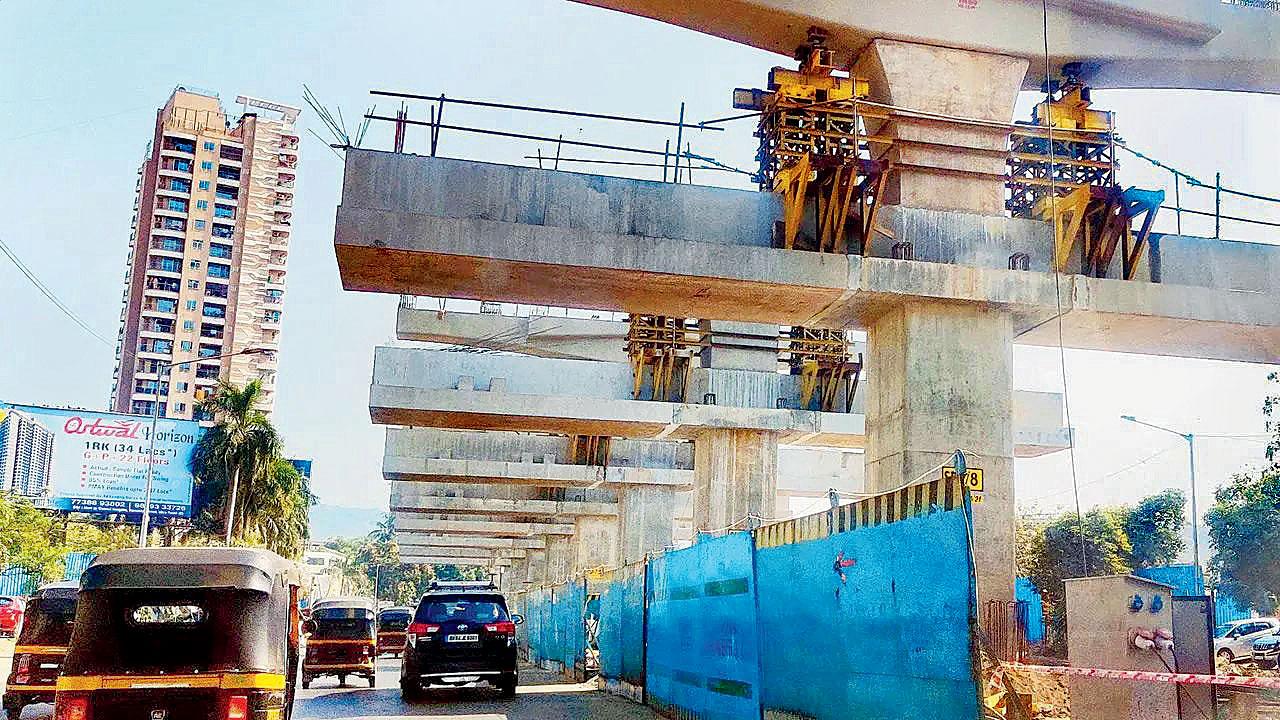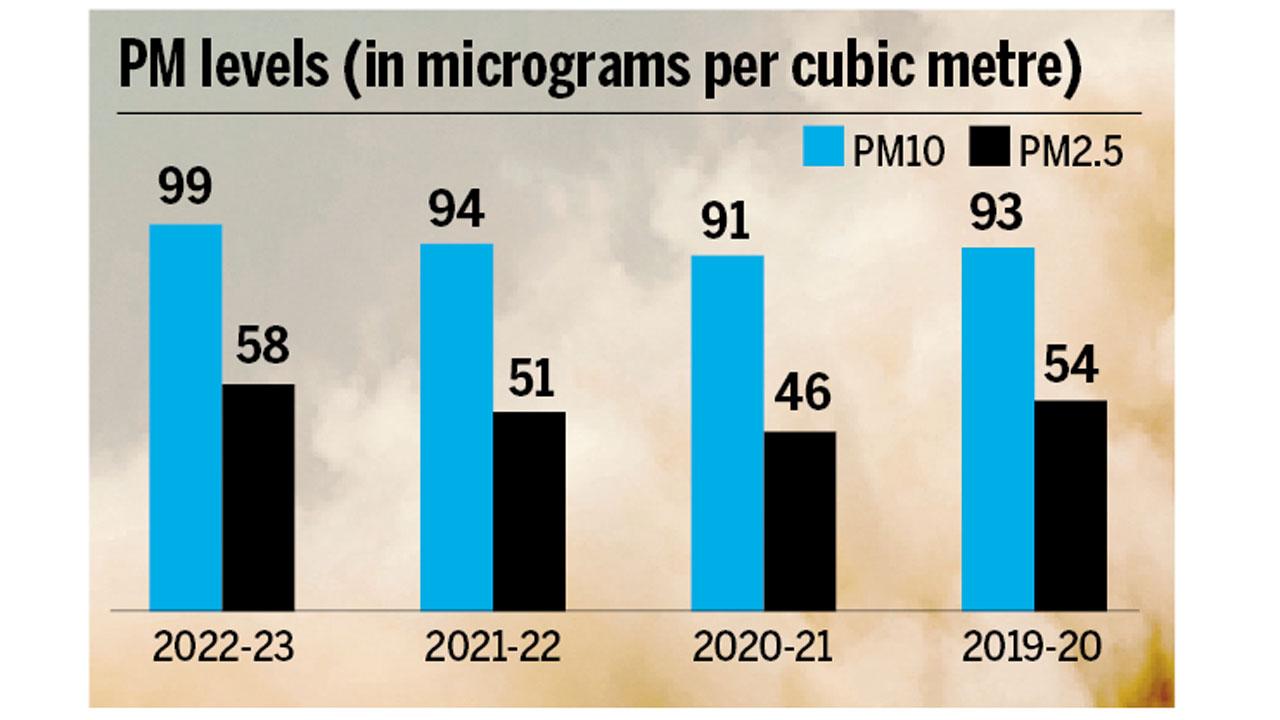BMC’s latest environment report throws up alarming data with pollution levels in 2022-23 highest in last four years. Officials blame toxic air on construction activity

Construction activity in full swing for the Coastal Road at Marine Drive. File Pic/Sameer Markande
Key Highlights
- The worst mid-month city air quality in the country was recorded in February
- The average Particulate Matter (PM) 10 level was at 99 micrograms per cubic metre
- The average PM2.5 levels stood at 58 micrograms per cubic metre
The findings of the Brihanmumbai Municipal Corporation’s latest environment report are alarming, with pollution levels recorded higher as compared to previous years. Of the last four years, 2022-2023 has been the most polluted year for the city. According to the civic Environment Status Report (ESR) of 2022-23 published on September 18, the average Particulate Matter (PM) 10 level was at 99 micrograms per cubic metre, while PM2.5 levels stood at 58 micrograms per cubic metre.
ADVERTISEMENT
Central Pollution Control guidelines mandate that PM10 and PM2.5 levels should not exceed 60 and 40 micrograms per cubic metre, respectively. According to the data, the Bandra Kurla Junction is the most polluted area among the nine air quality monitoring stations in the city. BKC witnessed an average PM10 level of 121 micrograms per cubic metre.
“The worst mid-month city air quality in the country was recorded in February. PM is mainly generated due to the dust, which is caused by construction work in the city. The city is currently undergoing redevelopment, which is the main cause for the higher PM,” said a BMC official.

Construction work being carried out for the Metro-9 project. File Pic/Nimesh Dave
The official further stated that the civic body has introduced guidelines for all construction activity to reduce dust. “These include sprinkling water and installing high sheets around construction work to prevent dust from getting on the roads,” the official added. Under the Mumbai Pollution Control Action Plan, the BMC had decided to sprinkle water in polluted areas and also increase mechanical road sweeping. The civic body also planned to increase the use of electric vehicles and electric BEST buses.
Chest medicine expert Dr Pralhad Prabhudesai said that incidences of chronic cough and throat irritation have increased. “Usually, with routine medicines, patients recover in five to six days. But this year they took a longer time to recover with the same medication. Pollution causes ailments of the respiratory system, including bronchitis, asthma, and chronic obstructive pulmonary disease (COPD). Similarly, throat irritation, cold, chronic cough and various lung-related allergies also occur, apart from fatigue and red eyes,” he said.
“Recent years have seen Mumbai experience several episodes of poor air quality, especially during the winter season. To have successful implementation of the Clean Air Action Plan, the city agency needs to effectively engage with various stakeholders. Adopting data-based understanding for decision-making, and identifying and deploying sector-based pilot projects will help accelerate the success of the action plan,” said Sree Kumar Kumaraswamy, program director of Sustainable Cities & Transport, WRI India.

BKC always polluted
For three of the past four years, the average pollution level has been high in the BKC area. During 2022-23, the yearly average PM10 level was recorded at 121 micrograms per cubic metre, while it was at 117 during 2021-22. In 2020-21 BKC’s average PM10 level was 122 micrograms per cubic metre and in 2019-20 it was 114 micrograms per cubic metre, which is the highest in the city. There are air quality monitoring stations at nine locations across the city, including Chembur, Bhandup, BKC, Colaba, Andheri, Malad, Mazgoan, Worli and Borivali, which were started by the central government.
99
PM10 level in city; 60 is max permissible limit
121
PM10 level recorded at BKC
 Subscribe today by clicking the link and stay updated with the latest news!" Click here!
Subscribe today by clicking the link and stay updated with the latest news!" Click here!







